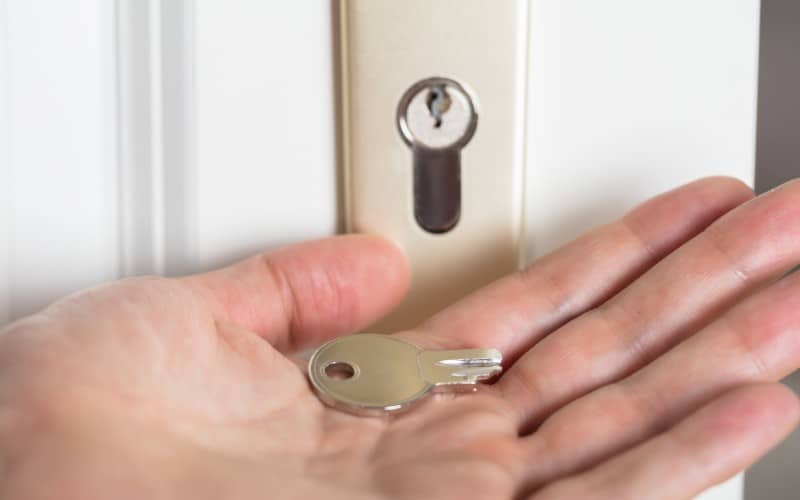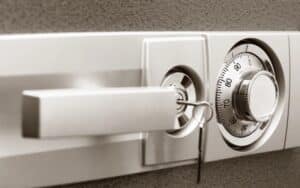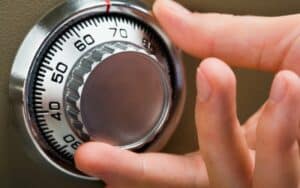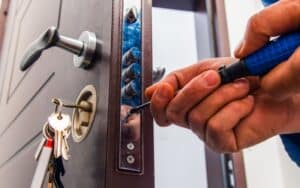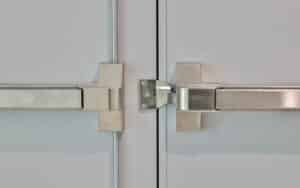Encountering a broken key stuck in a lock is an all-too-common experience that can quickly turn a routine day into a hassle.
It’s an issue that knows no bounds, affecting homeowners, renters, and DIY enthusiasts alike. Such moments not only test your patience but also your problem-solving skills. The good news is, with the right approach, extracting a broken key is not as daunting as it may seem.
Table of Contents
ToggleUnderstanding the Problem
Keys breaking in locks is often due to a combination of factors, including wear and tear, excessive force, or issues within the lock mechanism itself. Pin tumbler locks, prevalent in residential settings, are particularly prone to this issue due to their structure and frequent use. Deadbolt locks, although robust and durable, are not immune to this problem, especially when used with worn or weak keys. Additionally, environmental factors such as extreme temperatures and dust accumulation can contribute to key breakage. Recognizing the type of lock and understanding its vulnerabilities is a critical first step in effectively addressing the issue of a broken key.
Safety First
Safety should always be your primary concern when attempting to extract a broken key. Start by ensuring that the lock is not under tension; for example, if the broken key is in a door lock, ensure the door is not being pushed or pulled while working on it. Using inappropriate tools or methods can not only cause further damage to the lock but also pose personal injury risks. Always wear protective eyewear to guard against tiny metal fragments. Additionally, consider the environment: if you’re working on an exterior lock, be aware of weather conditions that might affect your safety or the lock’s mechanism. If at any point the task seems overwhelming or risky, it’s wise to defer to the expertise of a professional locksmith.
Tools and Materials Needed
The right tools are essential for successfully removing a broken key without causing additional damage. In addition to needle-nose pliers, lubricants like WD-40, and broken key extractors, a few more items can be helpful:
- Tweezers: Useful for gripping small pieces of the key if they are accessible.
- Magnifying glass: Helps in visualizing the lock mechanism and the broken key piece.
- Flashlight or headlamp: Provides necessary lighting, especially for locks in poorly lit areas.
- Small screwdriver or paperclip: Can assist in manipulating lock pins or pushing the key out.
For those who may not have specialized locksmith tools, everyday items like a small piece of wire, a sturdy paperclip, or a bobby pin can sometimes serve as makeshift key extractors. It’s important to use these items with care to avoid damaging the lock or injuring yourself. Remember, the goal is to remove the broken key safely and efficiently, without compromising the integrity of the lock.
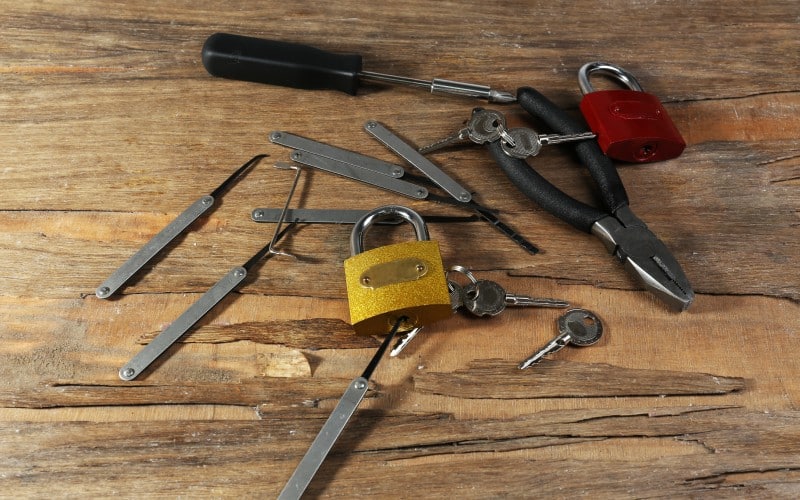
Step-by-Step Guide to Removing Broken Keys
The Lubrication and Tap Method: Begin by applying a small amount of lubricant into the keyhole. This helps to loosen any debris and reduce friction. Then, using a non-metallic tool, gently tap the edge of the lock. This vibration can help the broken piece of the key to slide out, especially if it’s not deeply lodged. Be patient with this method, as it may take several attempts.
Using Needle-Nose Pliers: If a portion of the key is protruding from the lock, carefully use needle-nose pliers to grip the exposed end. Make sure to grasp firmly but gently to avoid snapping the key further. Wiggle the key back and forth gently as you pull, which can help release it from the lock’s grip.
Employing a Broken Key Extractor Tool: Insert the thin end of the extractor tool into the lock, alongside the broken piece of the key. Apply gentle pressure and twist the tool slightly, aiming to hook onto the broken key. Once you feel it latch on, slowly pull the extractor tool out, bringing the key piece with it. This method requires a bit of finesse to avoid pushing the key deeper.
Remember, each lock type has its peculiarities, so consider the lock you are dealing with before choosing your method.
Advanced Techniques
For particularly stubborn cases, advanced techniques may be required. These include lock disassembly or using specialized locksmith tools like a key extraction kit. These methods often require a deeper understanding of the lock mechanism and should be approached with care to avoid causing permanent damage to the lock.
When to Call a Professional
In situations where the key remains stuck despite your efforts, or if you notice the lock mechanism is getting damaged, it’s prudent to call a professional locksmith. DIY efforts can sometimes exacerbate the problem, leading to more expensive repairs or even the need for a complete lock replacement.
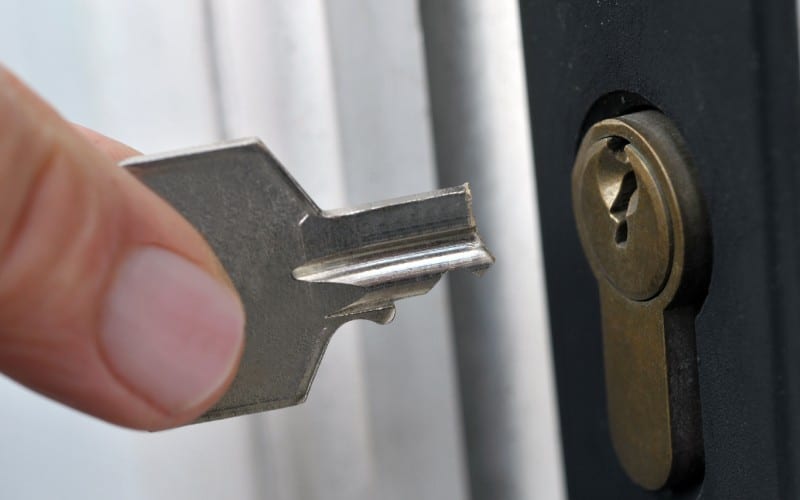
Preventative Measures
To minimize the risk of keys breaking in the future, consider the following:
- Regular maintenance: Regularly lubricate your locks with a graphite-based lubricant. This reduces wear and tear on both the key and the lock mechanism.
- Gentle handling: Avoid using excessive force when locking or unlocking doors. If a key is resisting, it might be a sign of a deeper problem with the lock.
- Key inspection: Routinely inspect your keys for signs of wear or damage. Bent, worn, or rusted keys are more likely to break and should be replaced.
- Spare keys: Use a spare key if your primary key starts to show wear. This can prevent breakage and give you time to get a replacement.
Conclusion
The task of extracting a broken key from a lock, while it may seem daunting at first, can often be managed effectively with the right approach and tools. It’s important to take a moment to assess the situation calmly, choose the most suitable method, and proceed with careful, deliberate actions. Patience and attention to detail are your allies in this task. However, it’s equally important to recognize when a situation is beyond your expertise. In such instances, seeking the help of a professional locksmith is not just a matter of convenience but also of security and efficiency.
By being prepared and knowledgeable about these techniques, you equip yourself to tackle this common yet challenging issue with the confidence and skill of an experienced problem-solver.
